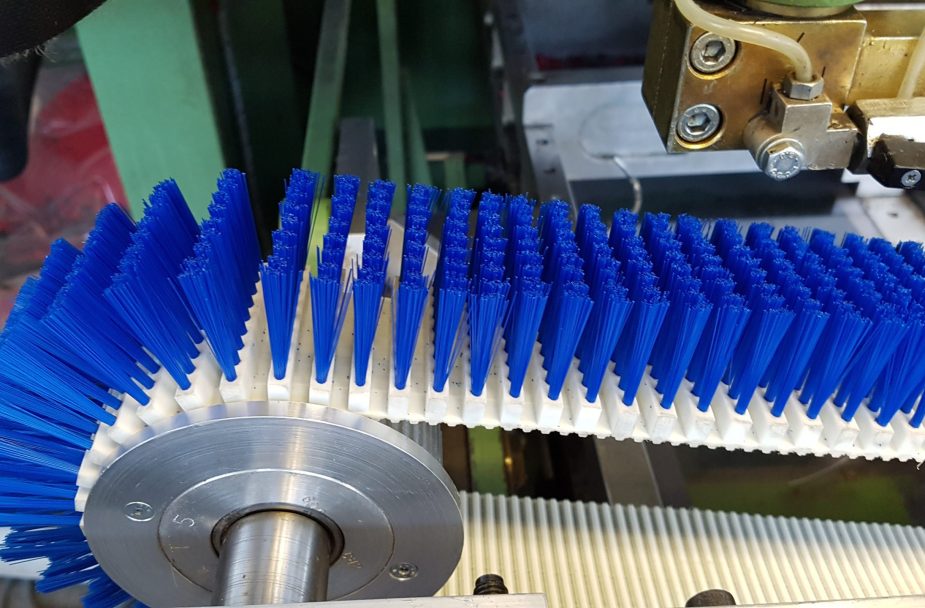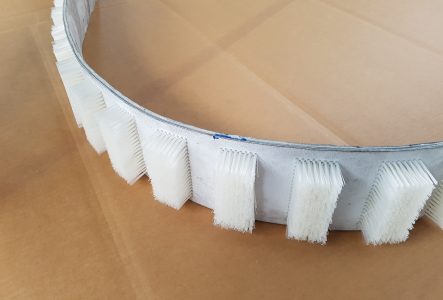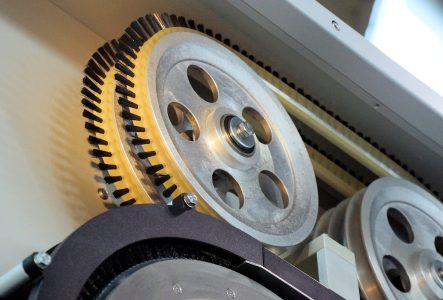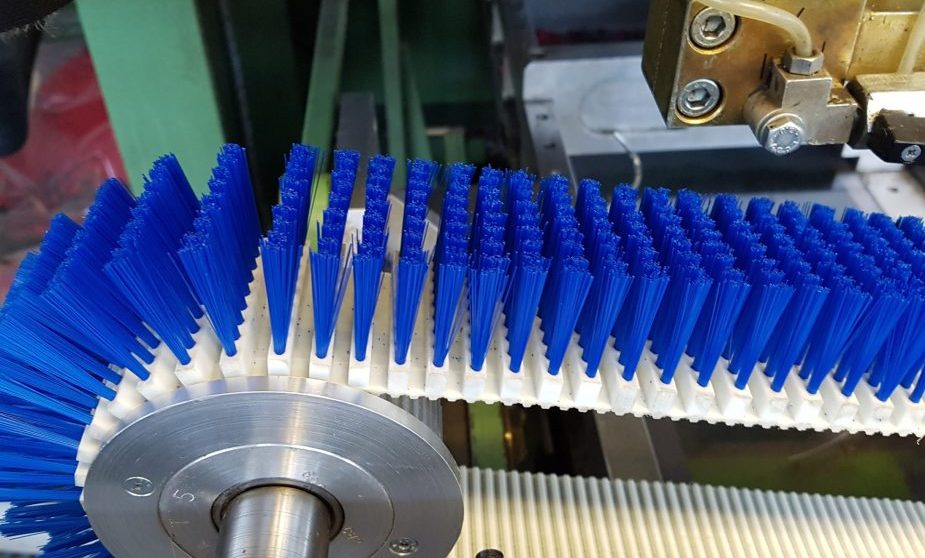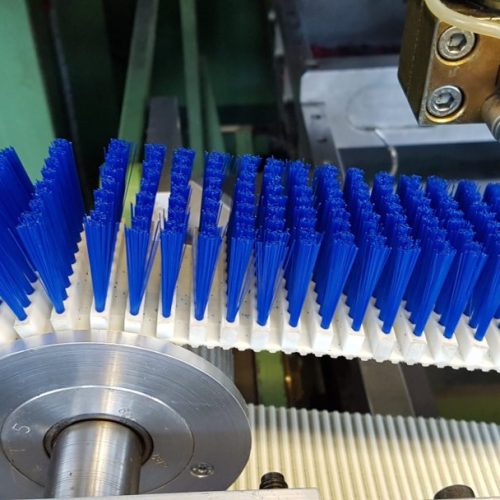Belt-punched brushes
Belt-punched brushes
Generalities
By arranging the bundles on a flexible base, a belt-driven brush is obtained, which can be motorised via pulleys or drums. On the pulleys (trapezoidal or rectangular), brushes of limited width are to be mounted, usually with one or two rows of bundles. On the drums, wider brushes are fitted, with many rows of bundles.
Belt brushes are used for:
- Brushing flat surfaces
- Transport of flat parts
- Transport of three-dimensional objects (caps, bottles, etc.) We can supply brushes on polyurethane (PUR), leather or felt belts
We can also inset belts supplied by the customer.
In this case it must be remembered that only brushes on belts with a hardness of more than 90 Shore A can be manufactured. If the base is PUR, the brush is supplied in metric lengths with a single piece generally 30 m long. This considerably reduces assembly waste. The leather base can also be available with a thin layer of synthetic material to make it inextensible.
Standard sizes for belt brushes with PUR base are shown in the table. Other sizes are available on request. Brushes on felt belts can be manufactured in widely varying sizes. Compared to leather, they can be handled by drums with a smaller diameter since it is a more flexible and softer material. For the same reasons, however, the mechanical hold of bundles is inferior to that of brushes on leather.
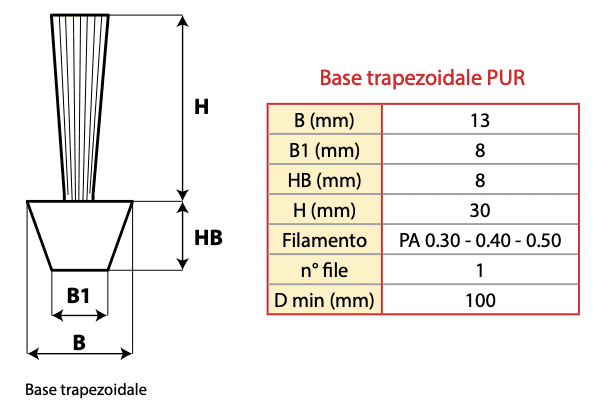
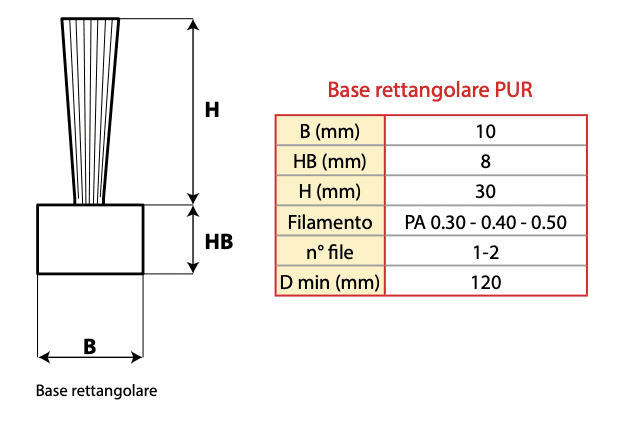
Self brush is a belt brush on a 7×7 mm rectangular polyurethane base.
Standard delivery includes corrugated black nylon 0.30 with a height of 30 mm. It is supplied in rolls of 10 m and can be used directly by the customer for roller brushes, flat brushes or simple seals.
Self Brush is very useful for self-building prototypes or making urgent brushes. In fact, Self Brush is easily cut to size with a normal cutter.
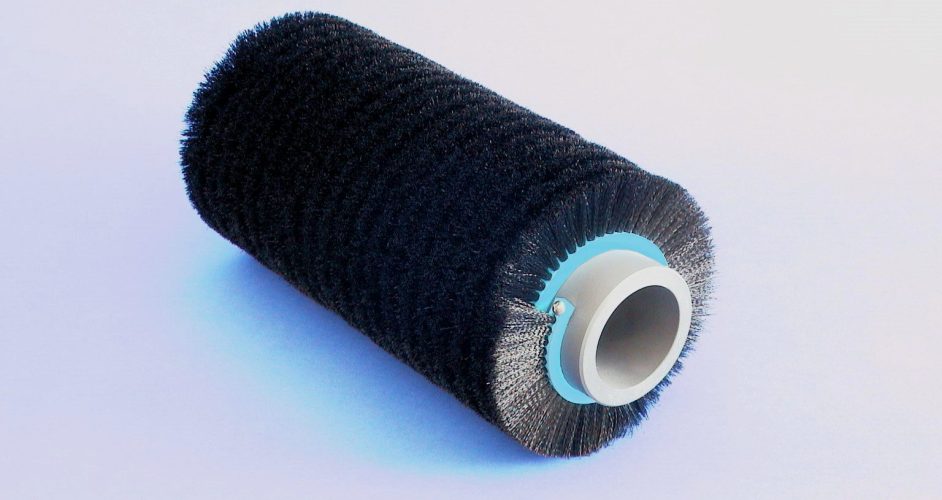
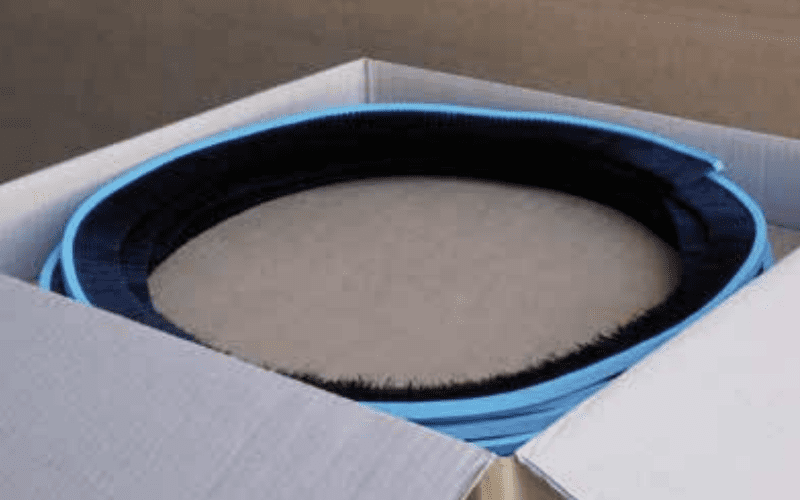
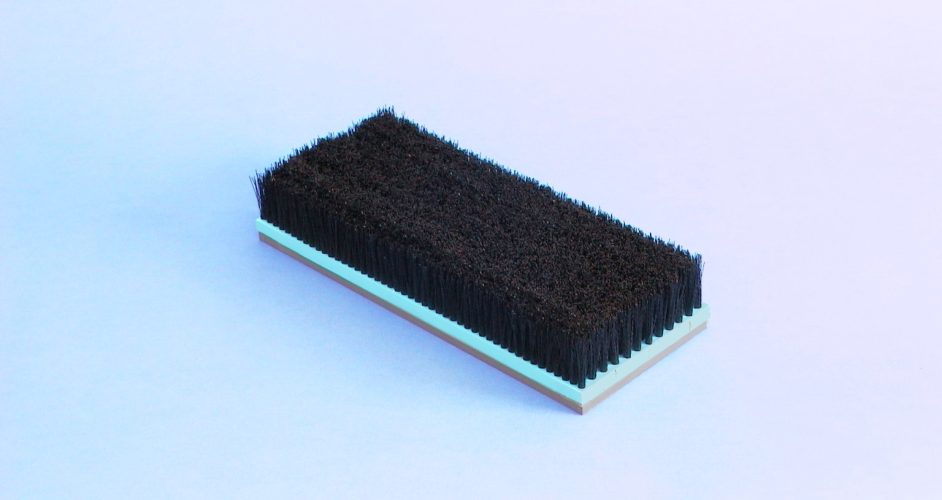
Videos and images
GALLERY
Do you want to request an offer?
Are you interested in receiving more information and being contacted by one of our specialized operators?
Request your offer now
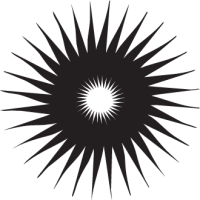
Do you want to request an offer?
Are you interested in receiving more information and being contacted by one of our specialized operators?
Request your offer now
Frequently asked questions
The special feature of the brush is that the working surface consists of millions of individual elements, which are the ends of individual filaments.
This gives the brush an adaptability that no other element, however deformable, can have.
It depends on various factors. In a nutshell, it can be said that 2 mm is a good compromise. The important thing is that the brush filaments work ‘on the tip’ and not on the side.
Depending on the materials used and the dimensions, there is a limiting tensile load that an individual bundle can withstand.
Beyond this limit, the bundle comes off, so the brush must be calculated according to use. This limit can be greatly increased by constructing ‘sewn’ or ‘tied’ brushes by hand, where instead of a single anchoring element, a continuous steel wire is placed.
There is no single answer. Speaking of e.g. cylindrical brushes, the strip brush is generally cheaper when the dimensions are large (e.g. over one metre in length). For small dimensions, punched brushes are certainly more suitable and convenient.
This can only happen if the brush has a manufacturing defect, like any other type of object (e.g. a roller made of silicone flakes, one of which is defective and breaks).
When it is important that no contamination occurs, synthetic (not natural) fibres with a diameter greater than or equal to 0.15 mm should be used.
Practically all degrees of hardness are possible, from very soft to very hard. In fact, hardness is a combination of the filament diameter, its free length and the density of the bundles.
Of course, we can provide FDA or FOOD GRADE certification and filament traceability.
Unfortunately not, as it is the machine + brush assembly that needs to be ATEX certified, not the brush alone.
However, it is possible to supply the materials that the certifier requires, e.g. conductive bases, conductive filaments, etc.
Generally speaking, it is possible, but one has to assess whether it is cost-effective, which is not always the case. In addition, in the case of a punched brush, it is inadvisable to regenerate the brush more than twice, so as not to reduce the tightness of the bundles.

